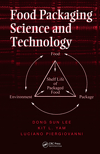Technology: Ink Resins
Resins Key to Packaging Ink Performance

Resins are a critical component in the manufacture of inks. Along with pigments, resins convey important properties to the printing process as part of the ink vehicle. Resins impart many important characteristics of a finished ink, including gloss and adhesion, runnability on the press, and can also help disperse pigment.
The global ink resins market is estimated to grow at an annual growth rate above 4.8 percent through 2026 and reach a market value around $4.5 billion, according to Acumen Research and Consulting.
In the global packaging market, there will be an increased demand for printing inks that will impel the general market in ink resins as printing resins are used in all types of printing inks. During the forecast period, the global packaging industry will likely expand rapidly. Packaging is a leading application for printing inks that use resins. It is estimated that in the coming years, printing for packaging applications such as flexible packaging, will increase the demand for ink resins.
In all parts of the world, the trend of e-books is rising rapidly, and this will likely hamper the global publishing industry, another major user of printing inks. Paper publication has begun to decline and this trend is expected to continue. In turn, this is likely to affect the global market for ink resins.
Ink resins are available in a variety of kinds, including modified rosin, polyamide, polyurethane, and acrylics.
The manufacturers of ink resin cooperate closely with the manufacturers of printing inks to understand the exact requirements of ink resins and produce ink resins accordingly. This collaboration helps manufacturers develop inks for specific printing processes such as lithography, flexography, engraving, digital printing or applications such as packaging, publishing and business printing. This close collaboration with ink manufacturers to create customized resins is a significant industry advantage.
The most frequently used ink resins are modified rosins. Modified rosins have the advantages of easy availability, low prices and product awareness. A majority of world gum rosin is manufactured In Brazil, Indonesia and China. Rosin for gum is used in the production of modified rosin, which is an ink resin and is used in printing inks as a raw material. The majority of countries that manufacture ink resins import gum resin. However, other ink resins such as polyamide and acrylic have been developed, and the use of modified rosins has decreased.
Asia Pacific is regarded as a world center of resin production. It makes large quantities of printing inks. It is also the biggest consumer of ink resins worldwide. Similarly, Europe is a key hub for companies that print ink and a major consumer of ink resins.
The ink resins market has experienced some consolidation, and major players include BASF, DIC Corporation (Sun Chemical), Lawter and Dow Chemical. It is also a mature market with established players, making it relatively difficult for new firms to enter. Many large market companies have adopted a strategy of new product development to compete effectively in the market, particularly in the development of sustainable and environment-friendly ink resins, For example, under the brand name Versamid, BASF has launched several new ink resins. BASF also produces environmentally compatible ink resins under the Joncryl brand name.
Looking for a reprint of this article?
From high-res PDFs to custom plaques, order your copy today!








